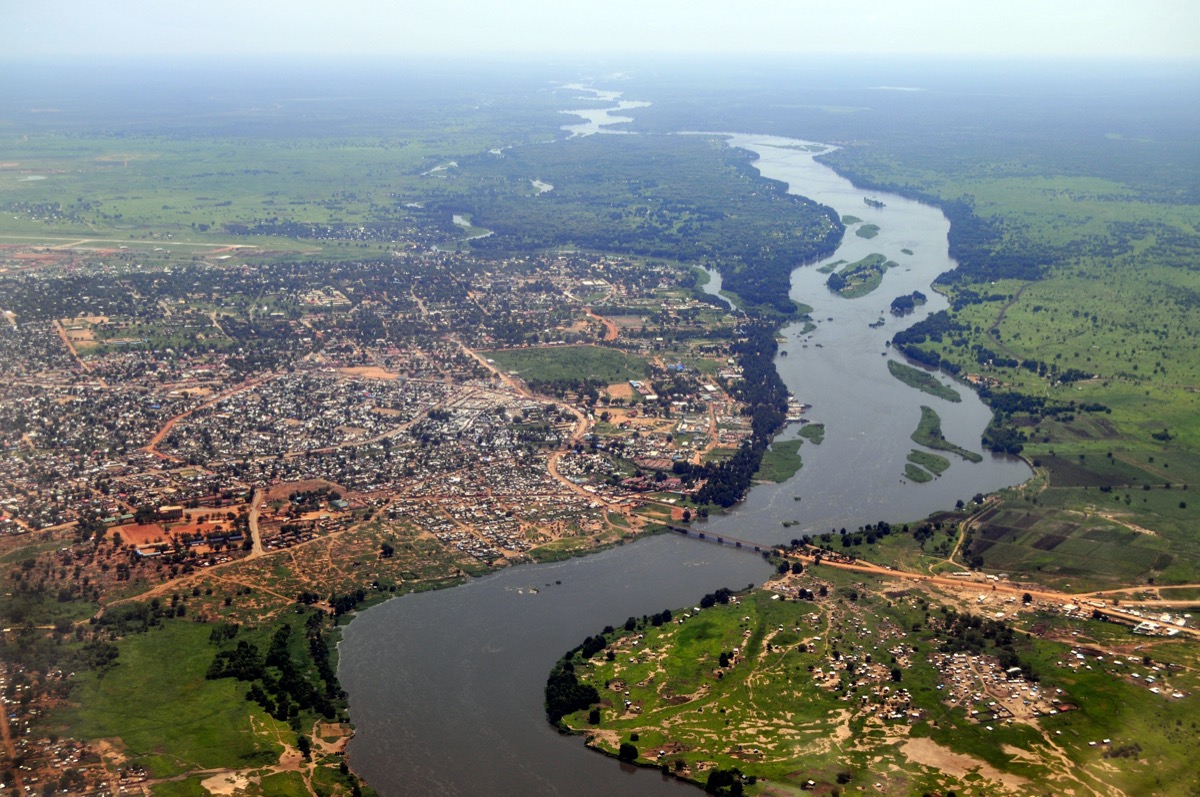1| Africa and Asia are home to nearly 90 percent of the world's rural population.

Not everyone lives in a booming city or sprawling suburb. Many people still make their homes outside of bustling locations—especially in India, which has the largest number of people living in rural areas (approximately 893 million people live outside of the city), according to Reuters. China also has an impressively large rural population, with 578 million living outside of major centers.
2The most expensive coin in the world was sold for more than $7 million.

The 1933 Double Eagle was a $20 U.S. coin made of gold that never went into circulation. A few of the coins were made, but most were destroyed—save for nine that were presumed stolen by U.S. mint workers. After years circulating the globe and falling into the hands of a few notable owners—including the king of Egypt—one of the coins was auctioned off at Sotheby's in 2002 for a stunning $7,590,020. That made it the most expensive coin ever sold at auction.
3The world's largest man-made oyster reef was created in Maryland.

Due to overfishing and disease, the oyster population in Maryland's Chesapeake Bay was seriously suffering. But thanks to dedicated work by scientists at the Horn Point Laboratory, the Army Corps, the National Oceanic and Atmospheric Administration, and the Nature Conservancy, the state is now home to the world's largest man-made oyster reef. Home to more than one billion oysters, the area is a no-fishing zone, which will hopefully give the population a chance to recover.
4A record-breaking 92 countries competed in the 2018 Winter Olympics.

Every four years, the Olympic games bring together the most competitive athletes from around the world. And when the PyeongChang Winter Games were held in 2018, 2,952 athletes were expected to show up from a total of 92 countries. That beat the previous record of 2,800 athletes from 88 countries who participated in the Winter Games in 2014.
5South Sudan is the youngest country in the world.

Some countries are hundreds of years old, while others can trace their nation's history back for thousands of years. But South Sudan in North Africa just gained its independence from Sudan in 2011, which currently makes it the youngest country in the world.
6More than 52% of the world's population is under 30 years old.

According to the United Nations Educational, Scientific, and Cultural Organization (UNESCO), as of 2012, 50.5 percent of the world's population were people under the age of 30. Around 89.7% of those young people live in emerging and developing economies like the Middle East and Africa.
7People 60 years and older make up 12.3% of the global population.

Although the majority of the human population is currently under 30 years old, there are still plenty of older folks among us. In fact, over 12% of people on Earth are 60 years old and older. That number is expected to reach 22% by 2050.
8There are more than 24 time zones around the world.

If the Earth's time zones were each one hour apart, then we would have 24 times zones, which sounds pretty straightforward. However, the situation is a little more complicated than that. Since many time zones only differ by 30 or 45 minutes, they don't fit into a neat and tidy 24-hour span, which means that there are more than 24, though it's hard to say exactly how many.
9Nearly half of the world's population watched both the 2010 and 2014 FIFA World Cup games.

Soccer—or football, depending on who you ask—is the most popular sport around the world. That's why when the FIFA World Cup games took place in both 2010 and 2014, nearly half of the world's population (around 3.2 billion people) tuned in to see who would win.
10It's estimated that Sweden has more islands than any other country.

With 221,800 islands, Sweden is thought to have more islands than any other country in the world. Only about 1,000 of them are inhabited.


No comments:
Post a Comment